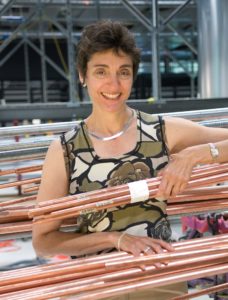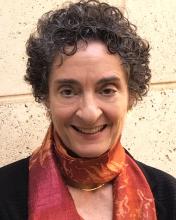Shatz wins Harvey Prize in Science and Technology
By Nathan Collins
CARLA SHATZ, the Sapp Family Provostial Professor and David Starr Jordan Director of Stanford Bio-X and a professor of biology and of neurobiology, has won the 2017 Harvey Prize in Science and Technology in recognition of her discoveries concerning the development of visual circuits in the brain.
Shatz said she learned of the prize Jan. 24 in an early morning phone call from the president of the Technion–Israel Institute of Technology, which administers the prize.
“I am really honored to receive this wonderful recognition for discoveries from my lab,” Shatz said.
“I am also truly humbled to be included with the two other women who have been past prize recipients since it was first awarded in 1972, Liz Blackburn in 1992 and Ada Jonath in 2002. I hope there will be many other women recognized going forward.”

When Shatz first started out as an independent researcher, a number of researchers believed that the complex circuits that underlie mammalian vision were genetically hardwired. But starting in the 1980s, Shatz and her lab showed that was only part of the story: They discovered that spontaneous electrical activity in the eyes helps fine-tune vision circuits, even in the womb before those eyes are exposed to light. That led to the discovery of neural plasticity, the idea that neural circuits dynamically rewire themselves using electrical signals as a guide.
Shatz’s findings had an impact well beyond vision. “Carla literally changed the way we think about development of the visual system,” WILLIAM NEWSOME, professor of neurobiology and director of the Stanford Neurosciences Institute, said in a 2017 profile of Shatz. “But beyond that, it turns out that many of the mechanisms Carla discovered hold true for the development of other pathways in the brain, not just the visual pathways.”
“When we first reported that spontaneous signaling from eye to brain is necessary in the developing fetus for the proper wiring of connections in the visual system, the result was met with great skepticism,” Shatz said. “But we didn’t give up. We just worked harder to amplify and understand the finding, which is now in most neuroscience textbooks.”
In the years that followed, Shatz and her lab built on that discovery, eventually revealing the molecular mechanisms that underlie the development of neural circuits in the vision system and elsewhere. In a surprise twist, those discoveries could help researchers better understand neurodegenerative diseases like Alzheimer’s – and perhaps one day lead to new treatments.
Shatz will accept the prize June 10 at the Technion in Haifa, Israel. Four different Harvey Prizes of $75,000 are awarded for contributions to science and technology, human health, Middle East peace, and the economy or society.
